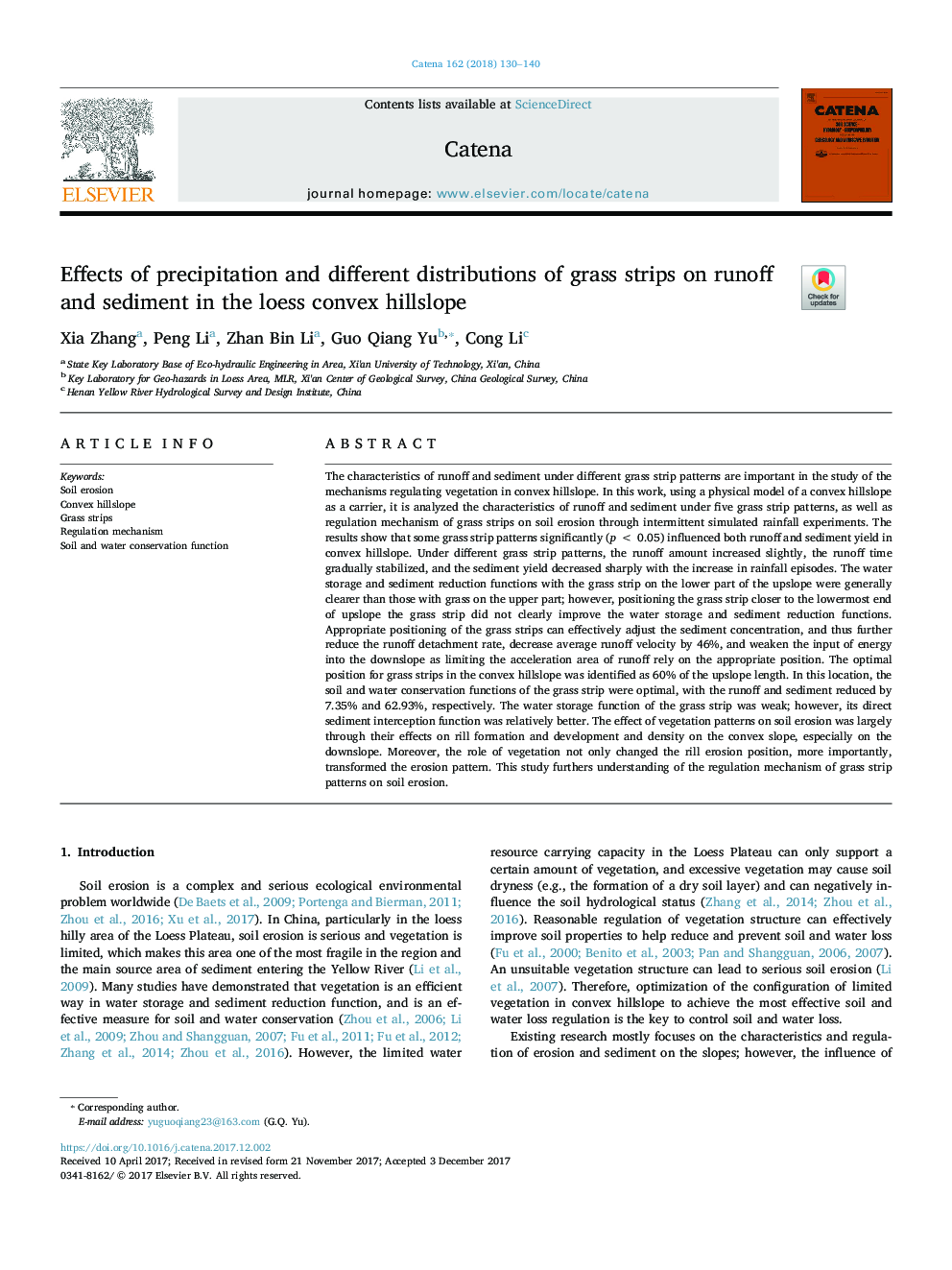| کد مقاله | کد نشریه | سال انتشار | مقاله انگلیسی | نسخه تمام متن |
|---|---|---|---|---|
| 8893736 | 1629192 | 2018 | 11 صفحه PDF | دانلود رایگان |
عنوان انگلیسی مقاله ISI
Effects of precipitation and different distributions of grass strips on runoff and sediment in the loess convex hillslope
ترجمه فارسی عنوان
اثر بارش و توزیع های مختلف نوارهای چمن در رواناب و رسوب در تپه های محدب
دانلود مقاله + سفارش ترجمه
دانلود مقاله ISI انگلیسی
رایگان برای ایرانیان
کلمات کلیدی
فرسایش خاک، تپه های قهوه ای، نوار چمن، تنظیم مکانیسم، عملکرد حفاظت از خاک و آب،
موضوعات مرتبط
مهندسی و علوم پایه
علوم زمین و سیارات
فرآیندهای سطح زمین
چکیده انگلیسی
The characteristics of runoff and sediment under different grass strip patterns are important in the study of the mechanisms regulating vegetation in convex hillslope. In this work, using a physical model of a convex hillslope as a carrier, it is analyzed the characteristics of runoff and sediment under five grass strip patterns, as well as regulation mechanism of grass strips on soil erosion through intermittent simulated rainfall experiments. The results show that some grass strip patterns significantly (p < 0.05) influenced both runoff and sediment yield in convex hillslope. Under different grass strip patterns, the runoff amount increased slightly, the runoff time gradually stabilized, and the sediment yield decreased sharply with the increase in rainfall episodes. The water storage and sediment reduction functions with the grass strip on the lower part of the upslope were generally clearer than those with grass on the upper part; however, positioning the grass strip closer to the lowermost end of upslope the grass strip did not clearly improve the water storage and sediment reduction functions. Appropriate positioning of the grass strips can effectively adjust the sediment concentration, and thus further reduce the runoff detachment rate, decrease average runoff velocity by 46%, and weaken the input of energy into the downslope as limiting the acceleration area of runoff rely on the appropriate position. The optimal position for grass strips in the convex hillslope was identified as 60% of the upslope length. In this location, the soil and water conservation functions of the grass strip were optimal, with the runoff and sediment reduced by 7.35% and 62.93%, respectively. The water storage function of the grass strip was weak; however, its direct sediment interception function was relatively better. The effect of vegetation patterns on soil erosion was largely through their effects on rill formation and development and density on the convex slope, especially on the downslope. Moreover, the role of vegetation not only changed the rill erosion position, more importantly, transformed the erosion pattern. This study furthers understanding of the regulation mechanism of grass strip patterns on soil erosion.
ناشر
Database: Elsevier - ScienceDirect (ساینس دایرکت)
Journal: CATENA - Volume 162, March 2018, Pages 130-140
Journal: CATENA - Volume 162, March 2018, Pages 130-140
نویسندگان
Xia Zhang, Peng Li, Zhan Bin Li, Guo Qiang Yu, Cong Li,
